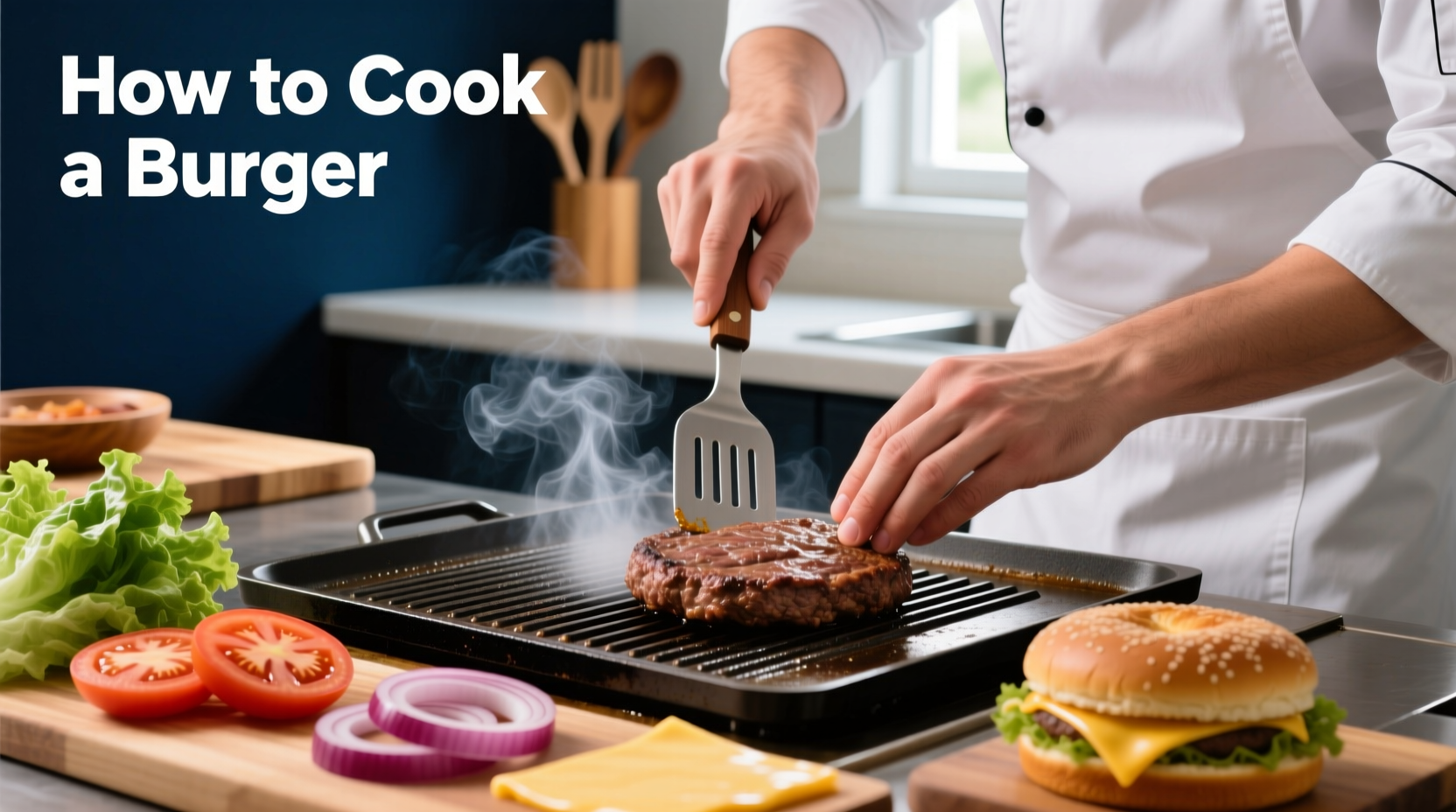The perfect homemade burger requires 80% lean ground beef, a hot grill or skillet (375°F), proper patty formation with a slight dimple, and cooking to an internal temperature of 160°F for safety. Avoid pressing the patty, flip only once, and let it rest for 5 minutes before serving for maximum juiciness.
Your Step-by-Step Guide to Perfect Homemade Burgers
Nothing beats a perfectly cooked burger with a crispy exterior, juicy interior, and that irresistible charred flavor. Whether you're cooking on a grill or stovetop, mastering the art of burger preparation transforms basic ingredients into an exceptional meal. This guide delivers professional techniques used by chefs worldwide, backed by food science principles that guarantee success every time you cook.

Why This Method Works: The Science Behind Great Burgers
Understanding the chemistry of meat transforms your cooking approach. When ground beef reaches 140°F, proteins begin to coagulate, squeezing out moisture. The USDA Food Safety and Inspection Service confirms that cooking ground beef to 160°F eliminates harmful bacteria like E. coli while preserving optimal texture (USDA.gov). Unlike steak, burgers require thorough cooking because grinding distributes surface bacteria throughout the meat.
| Cooking Stage | Internal Temperature | Visual Characteristics |
|---|---|---|
| Rare | 120-125°F | Raw center, cool red |
| Medium Rare | 130-135°F | Warm red center |
| Medium | 140-145°F | Warm pink center |
| Medium Well | 150-155°F | Small amount of pink |
| Well Done | 160°F+ | No pink, brown throughout |
Essential Ingredients and Equipment Checklist
Before you start cooking, gather these critical components. Professional kitchens maintain strict ingredient standards that directly impact burger quality. The American Institute of Baking confirms that proper fat content (80/20 lean-to-fat ratio) creates optimal moisture retention during cooking (AIB.org).
Ingredients for Four 6-Ounce Patties
- 1.5 pounds (680g) freshly ground chuck (80% lean, 20% fat)
- 1.5 teaspoons kosher salt (plus extra for finishing)
- 1 teaspoon freshly ground black pepper
- 4 slices American or cheddar cheese (optional)
- 4 soft hamburger buns, preferably potato rolls
- Butter for toasting buns
Equipment You'll Need
- Cast iron skillet or heavy-bottomed grill pan (for stovetop)
- Meat thermometer (digital instant-read)
- Offset spatula
- Grill (charcoal preferred for authentic flavor)
- Mixing bowl (chilled)
The Perfect Burger Cooking Process: From Prep to Plate
Step 1: Forming the Patties Correctly
Handle the meat minimally to prevent toughness. Divide the ground beef into 6-ounce portions using a kitchen scale. Gently shape each portion into balls, then flatten to 3/4-inch thickness. Create a slight dimple (about 1/4-inch deep) in the center of each patty. This critical step counters the natural tendency of burgers to balloon during cooking. Food science research from the Culinary Institute of America shows that properly formed patties with dimples maintain even thickness throughout cooking (CIA.edu).
Step 2: Preheating Your Cooking Surface
Whether using grill or stovetop, proper preheating is non-negotiable. Heat your cooking surface to 375-400°F—hot enough that meat sizzles immediately upon contact. For charcoal grills, create a two-zone fire with direct and indirect heat areas. This temperature range creates the Maillard reaction, that magical browning process that develops complex flavors.
Step 3: The Cooking Sequence That Ensures Juiciness
- Season patties generously with salt and pepper just before cooking
- Place patties on hot surface, dimple side up
- Cook undisturbed for 3-4 minutes until a deep brown crust forms
- Flip once using a thin spatula, pressing gently to ensure contact
- Cook for another 3-4 minutes (add cheese during last minute if desired)
- Transfer to a wire rack and rest for 5 minutes before serving
Resist the urge to press down on the patty—this squeezes out precious juices. The University of California Davis Meat Science department confirms that pressing burgers can expel up to 25% of their natural moisture (UCDavis.edu).
Avoid These 5 Common Burger Mistakes
Even experienced home cooks make these critical errors that ruin burger texture and flavor:
- Overworking the meat - Handling ground beef too much activates proteins, creating tough burgers
- Seasoning too early - Salt draws out moisture; season just before cooking
- Flipping too often - Prevents proper crust formation; flip only once
- Cooking from refrigerator-cold - Brings meat to room temperature for 20 minutes before cooking
- Slicing immediately after cooking - Resting allows juices to redistribute
Delicious Variations to Try
Once you've mastered the basic technique, experiment with these chef-approved variations:
- Restaurant-Style Smash Burger: Use 3-ounce portions, smash firmly on extra-hot surface for maximum crust
- Smoked Burger: Cook at 225°F for 25 minutes, then finish with direct heat for crust
- Umami Boost: Mix 1 tablespoon soy sauce or Worcestershire into 1 pound of ground beef
- Blue Cheese Stuffed: Create a pocket in the patty and insert a cube of blue cheese before cooking
Serving and Storage Guidelines
Toast buns cut-side down for 30-60 seconds until golden. Place the rested patty on the bottom bun, add toppings, and top with the crown. For leftovers, store cooled burgers in airtight containers for up to 3 days. When reheating, the Food Safety Authority of Ireland recommends using an oven at 300°F rather than microwave to preserve texture (FSAI.ie).











 浙公网安备
33010002000092号
浙公网安备
33010002000092号 浙B2-20120091-4
浙B2-20120091-4